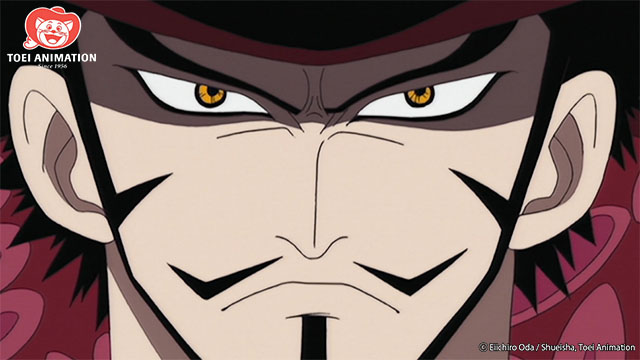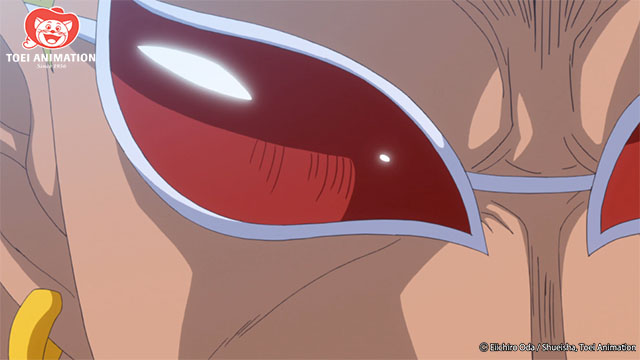So, in my opinion, successful worldbuilding requires two crucial things:
1) Enough details that the world feels fleshed out.
2) That the details are introduced and arranged in a way that feels natural.
If you lack one, the other suffers.Too little of the first, and the world will seem dull and lifeless.If you stumble at the second, the reader might as well look at a series' encyclopedia instead. Luckily, One Piece has both of these aspects in spades, with each new island the Straw Hats discover or character they meet or detail they learn usually feeling like a proper extension of what has earlier earlier Even when they launch into the sky to rescue an island in the clouds or find themselves attacked by a horde of zombies or wander through a town made entirely of dessert foods, it never seems out of place or like it's stretching the series' internal logic — such is the strength of the series&# 039; world-building.
However, if one thing represents the consistent power of the series' world-building as a whole, I think it's the Warlords of the Sea. Based on the real-life privateers who would use their approval by a country& #039;s navy to plunder certain targets, they're notorious pirates who, in exchange for some of their money and a government favor from time to time, are allowed to roam the world un-targeted by the Marines. It&# 039;sa pretty cool concept, one that creator Eiichiro Oda introduces through Mihawk, the world's greatest swordsman.

Mihawk is first seen cutting through Don Krieg's already wrecked ship, having terrorized the blustering pirate previously in the Grand Line. He is then more than willing to cut down (but not kill) Zoro after the young man challenges him to a duel. This combination establishes a gray area for One Piece, as so far, Luffy has only taken on guys like Morgan, Buggy, and Kuro — men that lean more toward abject cruelty when they're allowed (though we'll see Buggy change a little as the series goes on ).It shows that the morality of pirates is a wide spectrum, so the fact that later, when it's revealed that Luffy doesn't see himself as a true hero, it doesn't come out of nowhere.
It also establishes the Grand Line as not just a place where Luffy will be forced to overcome bigger obstacles on the way to his dream, but a location of pure chaos for most.Mihawk is both a new character and an omen of terrifying things to come .
Soon after, we get our first reference to Jimbei (sadly, we'd have to wait over a decade to see our lovable fish uncle for the first time) and learn there are seven of these warlords.Not only does this number let us know that the Warlords have a fair bit of organization (or at least an attempt at organization by the government)but it also creates anticipation for meeting them and, in some cases, beating them.In many series, the protagonist faces boss battle after boss battle, with new villains seemingly coming out of nowhere after the last one goes down. But by establishing a group and a concrete amount here, Oda begins adding structure to what would normally seem like a revolving door system of bad guys.When Luffy faces Crocodile (and later Moria and Kuma and Doflamingo) he isn't punching an escalating, random assortment of foes. He's taking on a system pre-set by Oda in the beginning.

Crocodile's role in the series goes a long way in not only giving us an idea of how huge some of these challenges will be for Luffy going forward on his adventure but also revealing crucial details about the political landscape of the Grand Line. Through Crocodile's plot, we learn that many of these kingdoms are ruled by a monarchy, but are often ripe for revolution, as the relationship between the royalty and their citizens is unsteady at best.
This is not only a reflection of what the Great Pirate Era has done to regular people (many live in fear of pirates and hunger for comfort from the ruling party) but also of the wider relationship with the world government.We haven't even met the higher-ranking Marines or the Elders yet, and yet we know the job they're doing taking care of the Grand Line probably isn't very good if the influence of outside corruption constantly threatens to lead to all -out war in a kingdom.
When Blackbeard attempts to gain membership in the Warlords, is rejected, and then finally admitted upon his capture of Ace, it further reveals an unsteady systemic power balance.So hungry for reputation is the World Government that they grant Blackbeard status without much thought given to It. He's allowed to join the club simply because he nabbed Whitebeard's 2nd Division Commander. And when the Straw Hats get to Thriller Bark (and are first told of things that will pay off muuuuch later like Wano and Kaido), this pride is taken a step further when Moria refuses Kuma's help in dealing with Luffy.

This kind of worldwide instability and constant thirst for power helps us better engage with stuff like Crocodile's quest to find the ancient weapon Pluton or the fact that, over the years, Doflamingo has seemingly been involved with every criminal activity ever, or the way that Boa Hancock stayed a member of the group even though she obviously seems like she's on Team Luffy for a chunk of the Marineford War.Additional bits like that don't matter in the slightest if it doesn't fit with the world-building themes of the series so far, but in One Piece they all become reasonable parts of the total package.

Good world-building is so much more than being able to tell readers which way the toilets flush or how a certain character like their meat cooked (though both of those are nice additions).It's taking the over-arching structure of a story and making it so cohesive that no matter what detail you decide to spackle in there, it fits and sticks.Everything works with everything else because the reader understands the system you're playing with. Through the Warlords, Oda didn&# 039;t just introduce a multitude of characters and locations and new pieces of lore to obsess over but helped to reinforce and strengthen wider themes already in place.That's good writing.
Who is your favorite Warlord? Let me know in the comments!

Daniel Dockery is a Senior Staff Writer for Crunchyroll. Follow him on Twitter!
Do you love writing? Do you love anime? If you have an idea for a features story, pitch it To Crunchyroll Features.
Leave a comment
You must be logged in to post a comment.